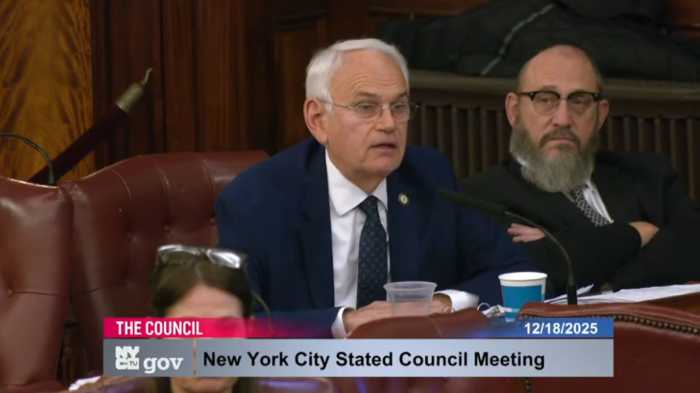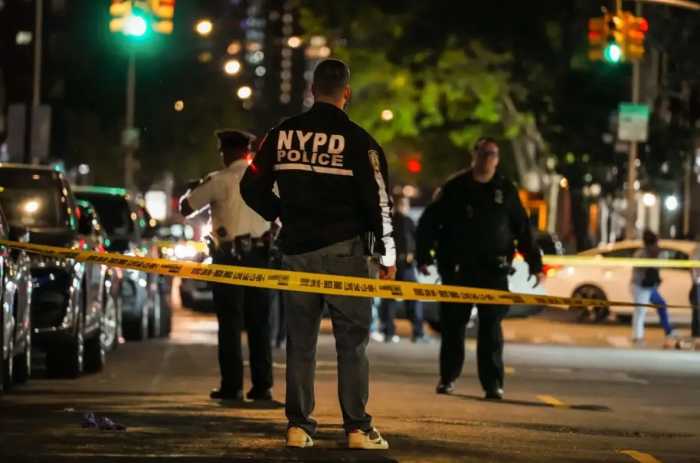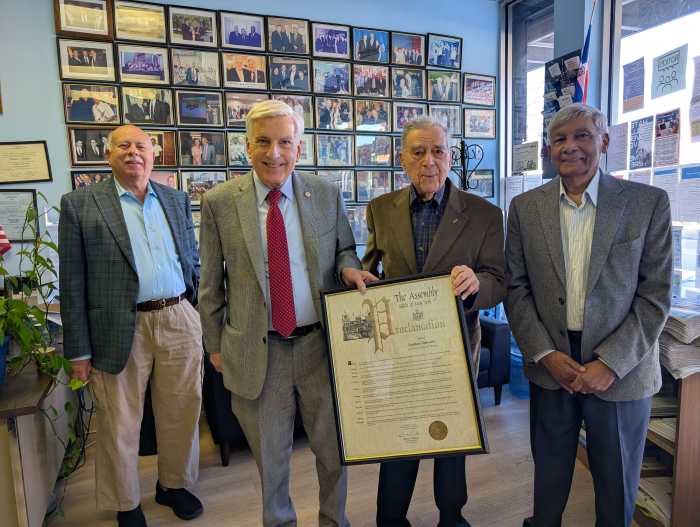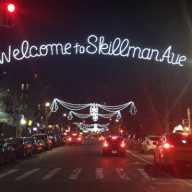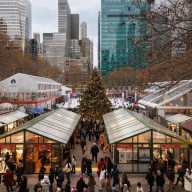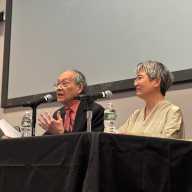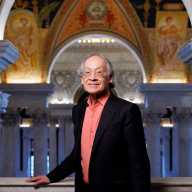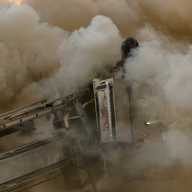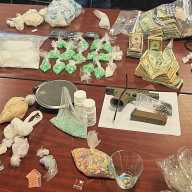By Sarina Trangle
A mile from where shuttered auto shops rise above cratered roads, Queens historian Jack Eichenbaum started his tour of several sleek shopping complexes that will one day compete with the redesigned Willets Point.
Nearly 30 tour members gathered among the New World Mall’s salons and attire shops in downtown Flushing Saturday to listen as Eichenbaum narrated the trajectory of Willets Point, a 23-acre site in the shadows of Citi Field. It supported dozens of car repair shops and junk yards run mostly by immigrants until the city approved a $3 billion plan to fold it into a new neighborhood and 1.4-million-square-foot mall.
Eichenbaum said the incoming retail hub will vie with several new malls on the block.
“You’ll see what they’ll be up against,” he said, before corralling the group to visit several shopping complexes he said were built in the last five years — New World Plaza, Queens Crossing, retail space slated for the revamped municipal lot 1, shops at the new One Fulton Square and Sky View Parc.
“They want to put a mall there, which hardly anybody can walk to, but they expect when the Mets lose, they’ll come drown their sorrow. I don’t know.”
The group headed across the Long Island Expressway, stopping to peer at the brush and dirt piles bordering Flushing Creek. Eichenbaum said Manhattan’s early settlers chartered various waterways in search of arable land, and found only modern day Flushing fertile. He said the salt marshes once abounded with fish, crabs, oysters, clams and bird, but had been damaged by industries that cropped up along the creek and raw sewage draining into the wetlands.
A dumping company used land west of the creek to burn trash in the early 1900s.
The area acquired its name from a road that passed through it and headed to the Willets family farm on Little Neck Bay.
The surrounding Flushing community had enough affluence and clout to see that its No. 7 subway train station was built underground when city planner Robert Moses headed to Queens in 1928. Moses engineered the incineration zone’s closure and damned and streamlined the creek to make way for the 1939 World’s Fair site. It grew into Flushing Meadows Corona Park and hosted a second 1964 World’s Fair.
Still, the sewerless maze of metal workshops, auto businesses and junkyards in Willets Point persisted, inspiring a series of unsuccessful redevelopment pitches until 2007, when former Mayor Michael Bloomberg marshaled plans for a shopping mall at the foot of Citi Field and parking and other facilities on remediate land in the so-called Iron Triangle. The city has since bought out many businesses.
As the tour headed into the mouth of the triangle, Eichenbaum spoke against a backdrop of men beckoning in cars with calls of “hello, hello, hello” and “come in.”
Metal gates were pulled taut over some of the auto shops, with signs boasting new locations. Workers tinkered at others.
Joseph Ardizzone, Willets Point’s lone resident, briefly co-opted the tour, describing how he once lived among those who worked at the World’s Fairs and ran a restaurant and bar out of his squat, two-story home. He posed for photos and described the redevelopment plan with vitriol.
“They’re taking parkland from kids,” he said. “Where will they play?”
Rose Alba, a City College architecture student doing her senior thesis on Willets Point, said his speech initially made her think twice.
Still, she concluded Willets Point should be developed.
“Right now no one goes there. It’s creepy,” she said.

